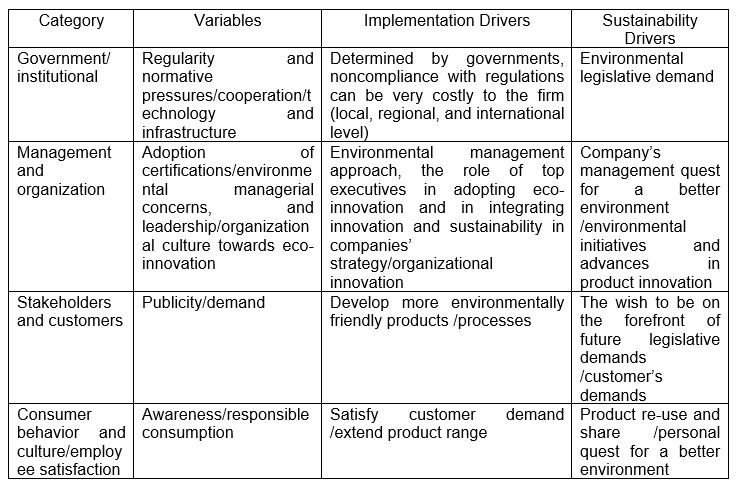Lesson 1 – Eco-innovation, a key enabler in the transition towards circular economy
Eco-innovation (EI) is a key enabler in the transition towards Circular Economy (CE). Eco-innovation drives the transition towards a circular model by helping to change current business models through product and service design, reconfiguration of value chains, changing how citizens interact with products (ownership, lease, shared use, etc.), and improving value delivery in systems (sustainable cities, ecological mobility, smart energy systems, etc.).
EI has the potential to trigger change, create pressure, and stimulate adaptation to a new socio-technical system, thereby facilitating the emergence of a circular economy.
According to the Eco-Innovation Observatory (2016), the CE requires eco-innovation in two different fields: “hardware” and “software”.
Hardware includes the technologies and technical infrastructures for transforming waste into resources, while software involves the skills, experience, and business models that will make this transformation a good business opportunity.
EI represents a fundamental pillar in the EU strategy for the development of a CE, systemic eco-innovations are those that contribute to achieving high levels of circularity.
Table 1 Classification of drivers for the adoption of eco-innovation towards a circular economy

There is a relationship:
- between political approaches, infrastructural changes, and the organizational capabilities with regard to product eco-innovation and process eco-innovation was confirmed.
- between political approaches, eco-design, and organizational capabilities for eco-innovation and product eco-innovations.
Furthermore, the relationship between political approaches towards a circular economy, eco-design, and the consumer/producer behavioral changes through exploitative strategies regarding infrastructural, institutional and organizational changes, education, trainings, and social awareness proved to be true as well.
The circular economy concept and the prospective market for eco-innovative products, as well as the possibility to increase a firm’s organizational efficiency through new organizational methods or the adoption of environmental processes, sought to comprehend how eco-innovation has been studied in the literature.
The conceptual framework was drawn concerning the drivers of eco-innovation towards a circular economy with regard to organizational capability and exploitative strategies.
In general, external factors impact internal factors, and they both affect the eco-innovation adoption process, leading to the positive performance of companies.
RELATION between a circular economy and innovation activities
The link between producer and consumer behavior, policy approaches towards a circular economy and product/process eco-innovations is a driving force in the development of organizational capabilities and exploitation strategies.
Industrial production processes cannot include an ecological production process without addressing sustainability, societal development and, most importantly, a circular economy. Companies can achieve financial and environmental benefits through sustainable production processes.
Eco-innovation is viewed as a crucial approach for overcoming challenges to a CE transition where drivers have a significant role to play.
The comprehension of the drivers of eco-innovation serves as a map towards the sustainable behavior of businesses, which often face tradeoffs when they undertake to finance eco-innovation activities in the circular system.
Understanding their motivations can aid policymakers in guiding and predicting company behavior, as well as developing instruments to encourage more environmental management. In terms of the firms’ resources and capacities, the findings show that collaborations with partners, alliances, and networks have a favorable impact on the product, process, and radical eco-innovations.
The company size is positively related with the decision to eco-innovate the product and process with respect to organizational capability.
The scale of the company is used as a proxy for the possible strategic and operational eco-innovation drivers. Small businesses confront greater challenges in implementing environmental solutions. the size of a company has a positive impact on environmental efforts in general.
The concept of a circular economy is a socio-technical frame to transform the linear economy into a more sustainable, restorative, and regenerative system. Such a transition between the linear economy and the circular economy is actually a move towards ecological sustainability, is about a structural change leading to the introduction of transformative innovation.